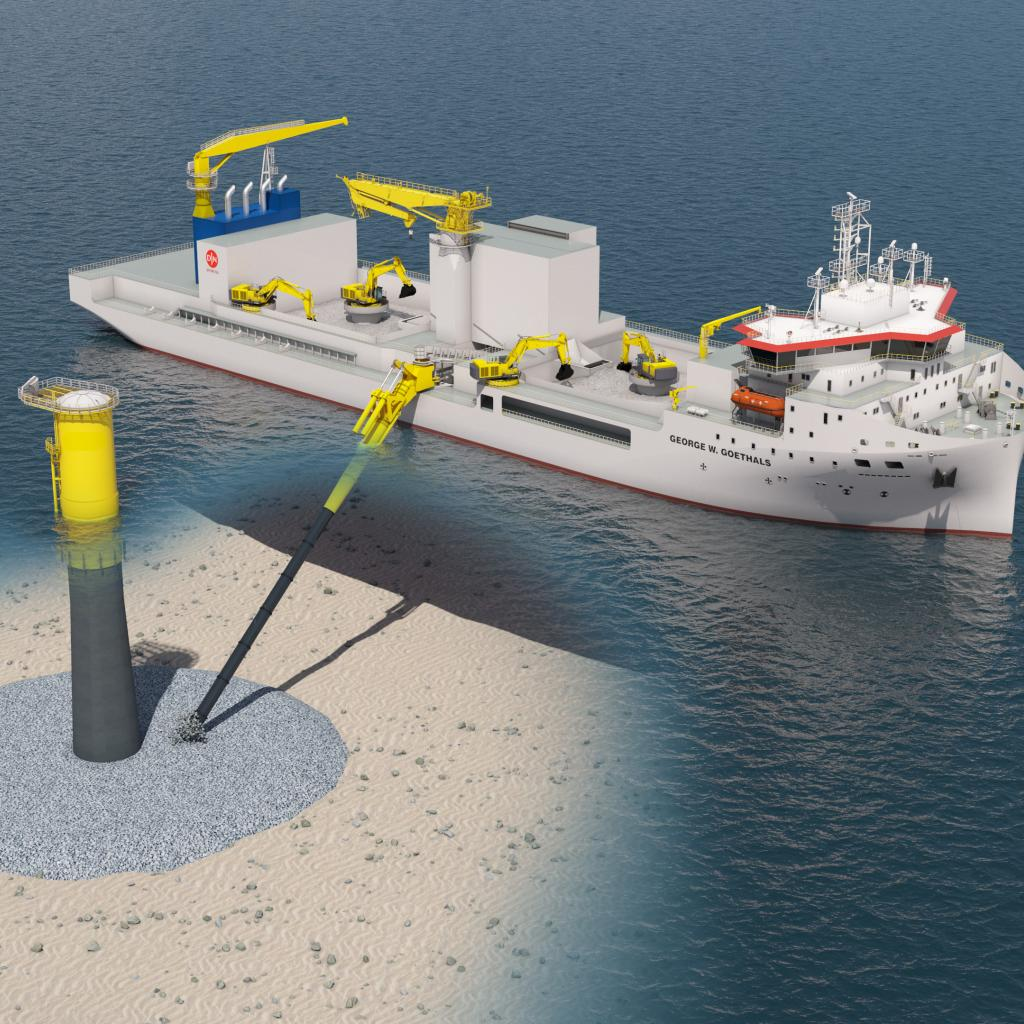In response to growing global demand for the protection of energy and data infrastructure, Jan De Nul has ordered a new dedicated vessel, the George W. Goethals.

The new vessel, named George W. Goethals, will primarily focus on projects in the energy sector. With numerous energy projects under development in the North Sea and Southeast Asia, these regions will form the core of her operational activity. The vessel has a capacity of up to 37,000 tonnes. With a state-of-the-art flexible vertical fall pipe and an inclined fall pipe system, she can install extra-large rocks to water depths of up to 400 meters.
The George W. Goethals will become the third rock installation vessel above 30,000 tonnes in the fleet of Jan De Nul. Designed entirely in-house, the vessel reflects the company’s vast experience in protecting offshore infrastructure.
Besides the new rock installation vessel, Jan De Nul is also building two extra-large cable-laying vessels, the Fleeming Jenkin and the William Thomson. Each vessel will have a cable-carrying capacity of 28,000 tonnes—more than any other vessel currently on the market. They are designed to install cables over longer distances with fewer subsea connections, making them ideal for interconnector cables that link energy grids across the globe. These cables enable electricity to flow quickly from areas of surplus to areas of demand, enhancing the reliability of renewable energy.
Ultra-low emissions and alternative fuel
The vessel will be an Ultra-Low Emission vessel (ULEv). ULEv is a highly advanced dual exhaust filter system which removes up to 99% of nanoparticles from emissions using a diesel particulate filter and a reduction system for nitrogen oxides (NOx). The system also significantly reduces exhaust gas pollutants.
With this technology, the vessel complies with the strict European Stage V emission standards for inland waterway vessels. Moreover, the NOx emissions are reduced to such an extent that this vessel meets the even stricter EURO VI emission limits.
The engines of the vessel can run on biofuel and green methanol, which significantly reduces CO₂ emissions. The hybrid power plant on board also contributes to the reduction of CO₂ emissions and optimal fuel usage. It combines the generators with a battery and drive technology, designed for peak shaving, load smoothening, spinning reserve and optimized engine loading.
The vessel will be equipped with four electric excavators. Among other applications, they will be used for loading large size rocks, enabling efficient operations without the need for a dedicated conveyor belt or crane on shore.
Philippe Hutse: “Decades of hands-on experience have given us deep expertise in subsea rock installation. We have applied this knowledge throughout the vessel’s design. The collective capacity of our subsea rock installation fleet now surges beyond 100,000 tonnes. This investment will strengthen our leading position in the industry.”


